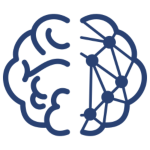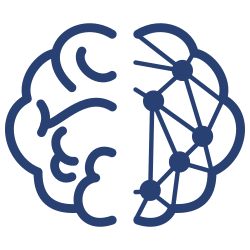- Tue 05 November 2019
- News
- Ankur Sinha
- #Auryn, #Brian, #Computational Modelling, #Fedora Lab, #GENESIS, #NEST, #Neuron, #NEURON, #PyNN, #Python, #Quality Assurance
We have been busy working on our first deliverable so this post is a little overdue. Since we now have quite a bit of software for computational neuroscience available to use in NeuroFedora, the obvious next step was to try and make this even more easily available to users.
A Fedora 31 based Comp Neuro ISO image is now ready, you can get it here. For more information on what this contains, and how it is created, read on.
Fedora Community deliverables
The Fedora community generates a bunch of deliverables for users. The main ones, of course, are the primary editions: the workstation, the server edition, CoreOS, Silverblue, IoT. They can all be obtained from the community website at https://getfedora.org.
All of these are ready to use and have gone through a thorough development cycle that includes a stringent Quality Assurance (QA) cycle. These are "live", so they can either either be used directly off the ISO image without having to install them, or they can be used to install a Fedora based system. Them being "live" makes them a great tool for temporary work---grab an ISO, start up a virtual machine, use Fedora to do your work, destroy the virtual machine when done.
While these are the main deliverables, the Fedora community also generates other media for our diverse user base. These are classified as Spins and Labs. While the Workstation is based on the GNOME desktop environment, Spins provide Fedora users other desktop environment based images: KDE, LXQT, XFCE, Mate, Cinnamon, Sugar on a stick (SAOS). Labs are similar, but instead of focussing on the desktop environment, they include customised sets of software required for particular purposes: Astronomy, Design, Python, Security, Robotics.
The Fedora Community Change Process
We therefore, submitted a community change proposal to permit us to generate another Fedora Lab image, one for computational neuroscience. You can read the proposal here. The Changes process allows community members to propose new changes to aid the community. Depending on their scope, they can either be "System wide" or "Self Contained" changes. The community discussed our proposal, and the Fedora Engineering Steering Committee (FESCO) has approved it as a change for the Fedora 32 release.
So, from Fedora 32 onwards, a Comp Neuro Lab image will be generated by the Fedora Release Engineering Team as an official Fedora community deliverable, and it will feature on the Fedora Labs website.
Fedora 31 Comp Neuro Image
Fedora 32, however, is still in the works. Fedora 31 was only released recently. Therefore, in the meantime, as a Beta test, the NeuroFedora team is generating an ISO based on Fedora 31 ourselves. You can get it here.
This is based on the Fedora Workstation, which is an excellent GNOME based operating system for users. To the Fedora Workstation, we added a variety of simulators and analysis tools that are used in computational neuroscience, such as: auryn, bionetgen, calcium-calculator, COPASI, qalculate, getdp, genesis-simulator, gnuplot, moose, nest, neuron, neurord, octave, paraview, python3, brian2, ipython, nest, neuron, libNeuroML, neo, nineml, PyLEMS, and smoldyn.
It also includes the complete Python Science stack: matplotlib, jupyter notebook, numpy, pandas, pillow, scikit-image, scikit-learn, scipy, statsmodels, and sympy.
If you use these tools, please give it a go and see what you think. You can contact us using one of our communication channels (also linked in the top bar of this site). If you use a tool that is not included in NeuroFedora yet, you can also suggest it for inclusion using this form.
NeuroFedora is volunteer driven initiative and contributions in any form always welcome. You can get in touch with us here. We are happy to help you learn the skills needed to contribute to the project. In fact, that is one of the major goals of the initiative---to spread technical knowledge that is necessary to develop software for Neuroscience.

